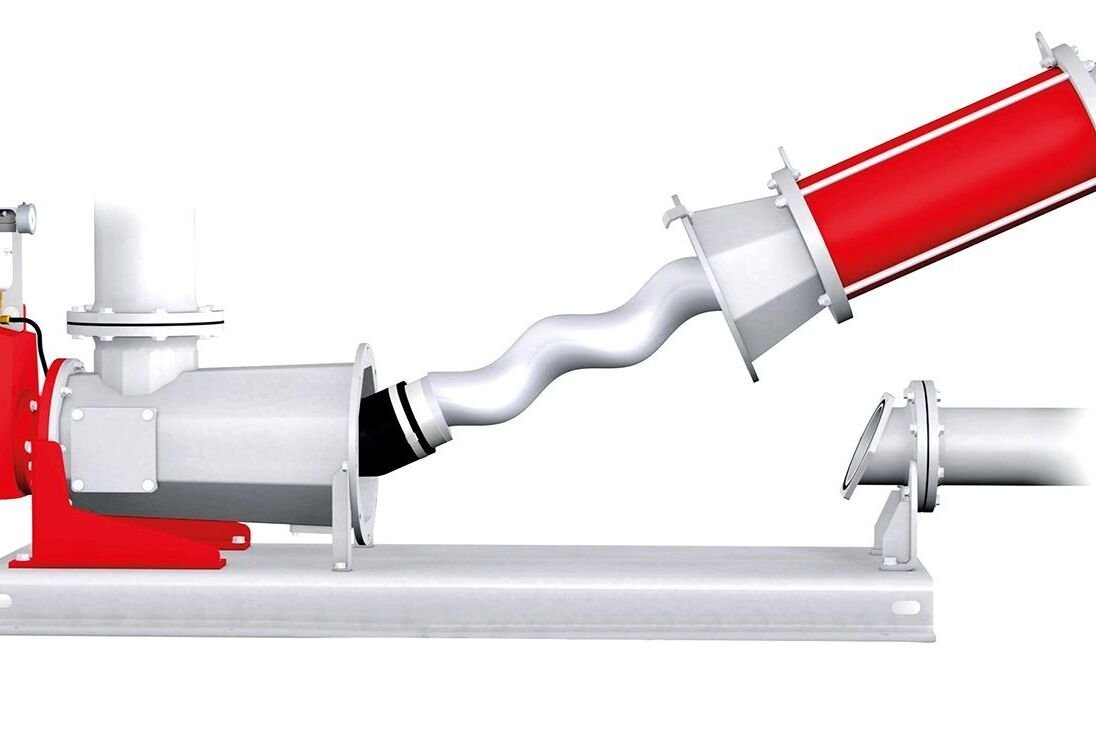Aufbau und Funktionsweise der CC-Exzenterschneckenpumpen
Pumpen für abrasive und viskose Medien
Progressive cavity pumps are rotating, positive displacement pumps. The basic principle of the progressive cavity pump was invented in 1930 and it is based on a rotor turning in a stationary stator. The rotor is shaped like a feed screw with a large pitch and flight depth and a small core diameter, and it rotates eccentrically in the stator. The stator, in turn, is shaped as a matching but double-threaded internal screw with a double pitch. Due to the geometry and the eccentric rotation of the rotor, cavities form, enclosing the medium and pumping it evenly from the suction side to the discharge side; the second flight of the stator acts as a pumping channel for the medium. Thanks to this pumping concept, progressive cavity pumps feature pumping at stable pressures proportional to the speed. Progressive cavity pumps in the CC series are particularly suitable for abrasive, viscous media such as sludge and organic suspension, even when they contain large quantities of coarse foreign and disruptive matter and/or need to be pumped against a high pressure.
